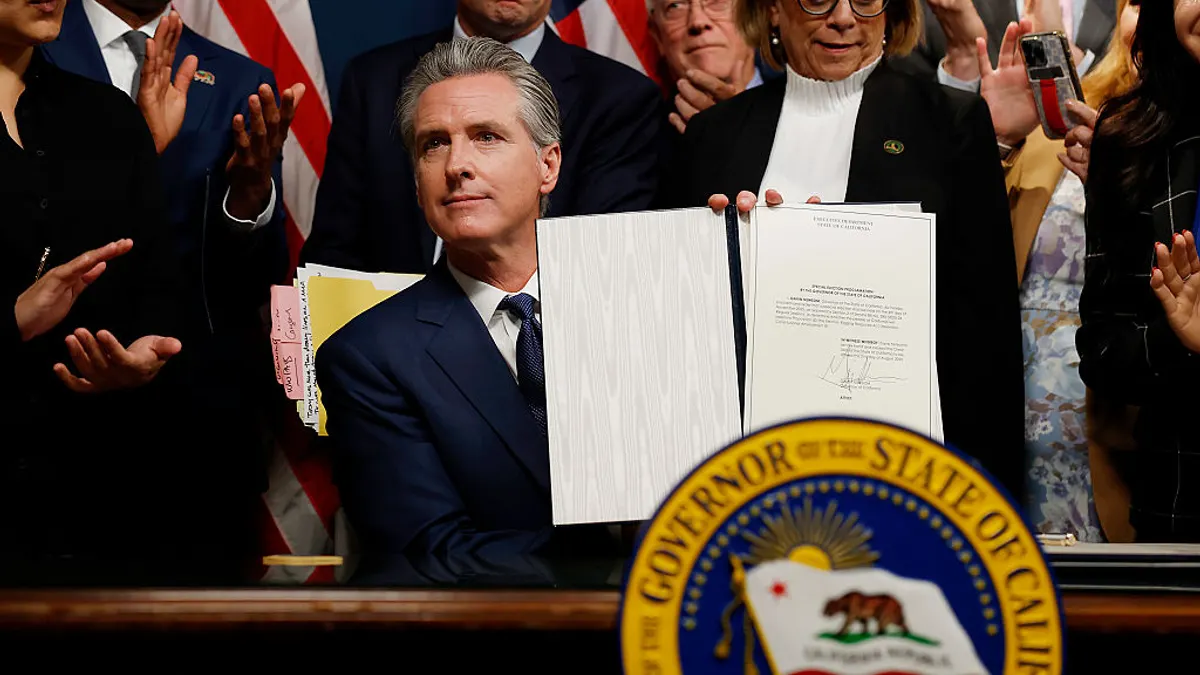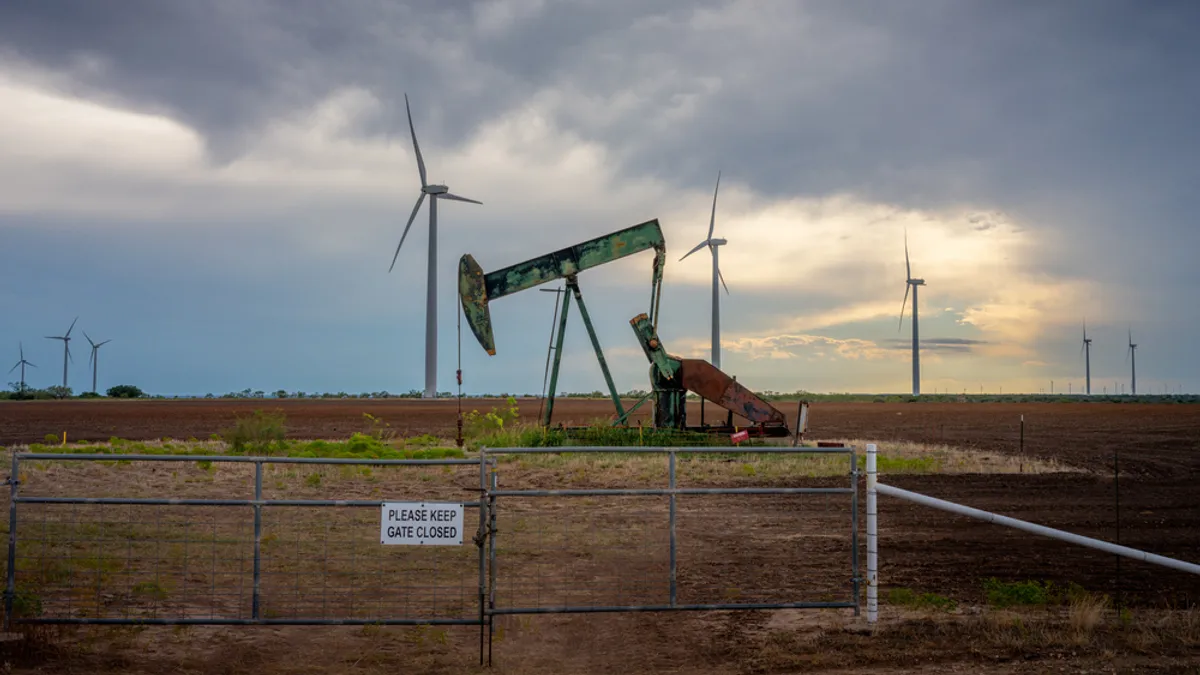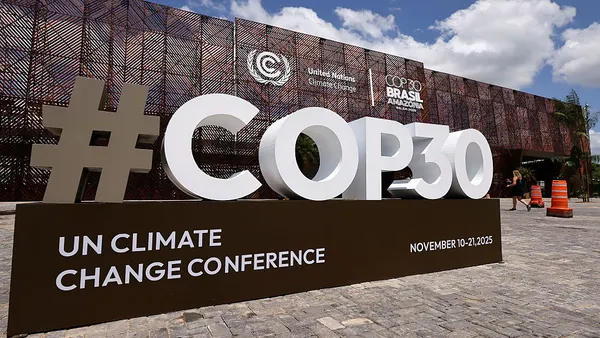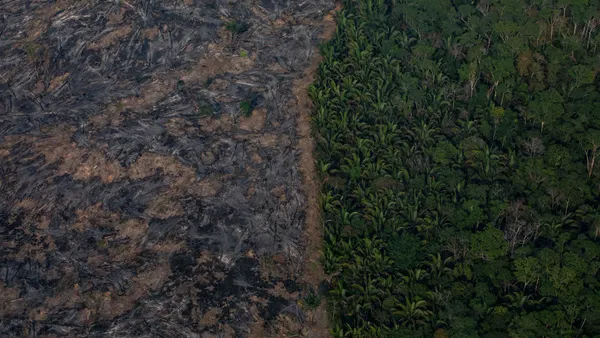Dive Brief:
- California Gov. Gavin Newsom signed an executive order last week geared toward accelerating the state’s response to climate-driven disasters and mitigating their economic impact, particularly on the insurance market and the energy utility sector.
- The order calls for multiple state agencies and departments to partner on research and establish guidance to develop tools and solutions to help the state better mitigate the risk associated with natural disasters. California has experienced deadly wildfires throughout the year, with the January fires estimated to have caused over $250 billion in damages and economic loss and at least 29 deaths.
- Amid the growing frequency and scale of climate driven events, Newsom’s directive seeks to “fairly allocate the costs of recovering” from such catastrophes, improve insurance availability and accessibility and ensure monetary compensation for wildlife survivors, among other measures.
Dive Insight:
The executive order came shortly after Newsom signed a package of bipartisan bills that aim to reduce electricity costs for California residents, stabilize the gas market, slash greenhouse gas emissions and help the state transition to a clean energy economy.
The package of reforms Newsom signed Sept. 19 includes Senate Bill 254, which seeks to establish the next generation of the California Wildfire Fund, support wildfire survivors and safeguard ratepayers from paying utility liability costs. The bill also directs the state’s wildfire fund administrator to put together a report on novel approaches to responding to climate disasters, including wildfires, by April 2026.
The California governor’s Sept. 30 executive order builds on SB 254’s mandate and instructs the state agencies to collaborate with the wildfire fund administrator on the information gathering process needed for that analysis. The EO directs the wildfire fund administrator to continue to consult with members and subject-matter experts from the California Public Utilities Commission, the Office of Energy Infrastructure Safety, the Department of Insurance, the Office of Emergency Services and the Department of Forestry and Fire Protection before compiling the report.
California has experienced an uptick of extreme climate-related catastrophes in the past four decades, with many events leading to severe economic loss. Between 1980-2024, the state underwent at least 46 weather or climate disaster events that spurred losses exceeding $1 billion each, according to the National Centers for Environmental Information, a division of the National Oceanic and Atmospheric Administration. These included 14 drought events, six flood events, three freeze events, four severe storm events and 19 wildfire events, per NOAA.
“There’s no Republican or Democrat thermometer — red and blue states alike, and countries around the world, are facing this climate-fueled insurance crisis,” Newsom said in a Tuesday press release. “We’re taking a whole-of-government response to protect Californians from wildfire while boosting coverage options and bringing down costs.”
The California governor’s executive order comes nearly a year after he signed SB 219 into law, which greenlit and slightly amended the state’s climate risk disclosure laws, SB 253 and SB 261. The pair of rules mandate more climate-related disclosures, including risks and emissions, from large companies operating in the state.











